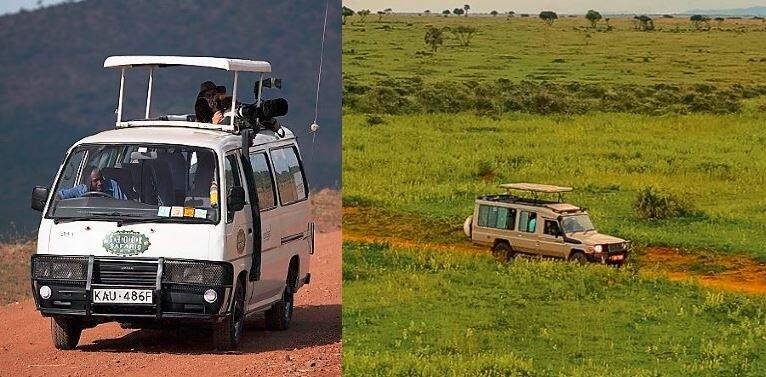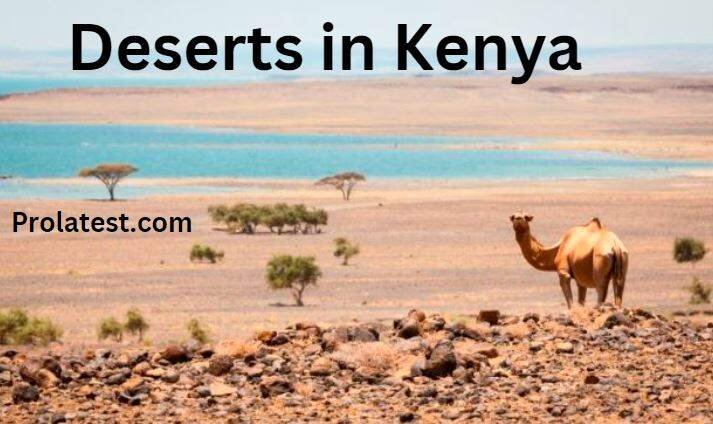Caves present the rich history and beauty of nature. The sites add to spectacular fauna and flora in the country. These caves were discovered by People and researchers during their daily activities. Between the 1950s and 1960s, Kenyan freedom fighters used these caves as hideouts from colonial forces. Before that, people used them as shrines, places for eating and resting, and hideouts during wars. The walls and floors of the caves are attractive. A significant number of both local and foreign tourists visit the caves to witness this beauty. The darkness and presence of multiple populations of bats inside the sites make the adventure breathtaking. Finally, the environs around the caves are full of wildlife and beautiful vegetation. Today, you’ll know the 8 amazing caves in Kenya, their locations, and contacts.
1. Paradise Lost Caves

Paradise Lost caves are located in Kiambu County, 14km from the Nairobi center. Coffee farmers discovered the site in 1996, and it covers 54 acres. River Gichi eroded these stone age caves.
The Paradise Lost cave is a historical tourist site. It bears stone age artifacts like obsidian rocks used for hunting. The waterfall at the entrance of the caves makes them one of the spectacular caves in Kenya.
Other facilities and services provide a perfect weekend getaway for Nairobi and Kiambu residents. Activities you can enjoy apart from the cave tours include;
- Boat riding
- Camel and horse riding
- Picnics
- Camping
- Fishing
- Bike riding
- Bird watching
- Coffee farm visiting
- Nature trail
At the gate, adults pay Kshs 400, and children pay Kshs 300. The cave tour costs Kshs 300 per person.
If you’re coming from Nairobi, you can use public transportation; a matatu (Number 100) from Nairobi city bus station will drop you at the gates of the Paradise Lost Resort. Or you can use a car or taxi. The resort provides ample parking.
Contact: 0721980842
Email: info@paradiselost.co.ke
2. Fikirini Sister Caves

Fikirini sister caves are famous caves in Kenya. They’re situated in Tswaka Village, Kwale County, only 15 minutes from Kenana-Shimoni Road Junction.
The caves bear a rich history of the Digo people from the Coast. They consist of the community’s cultural artifacts. People used the caves as hideouts, meal and water points, and shrines.
The three sister caves are:
Mdenyenye Cave
Villagers used the cave as a hideout from slave traders. Locals built a wooden staircase to connect from one point to another. It’s the most extensive cave among the three.
Kisimani Cave
The cave consists of an all-season freshwater well. Tourists can spot wild animals like baboons, monkeys, and bats drinking water at the well. You can spot seven bat species at the site, including common bent-wing, Egyptian fruit bats, and long-fingered bats.
Pangani Cave
The several chambers at the cave provided space for prayers and rest. People believe that ancestors had meals at the caves.
The local community-based organization manages the caves.
Find out: 7 Interesting Facts You Did Not Know About Kitengela Glass Bridge
3. Kitum Caves

Kitum caves are among the amazing caves in Kenya situated at Mount Elgon National Park, Kitale. The caves were formed by the cooling effects of volcanic rocks. The walls are sodium-rich, and wild animals like elephants break them to lick salt in the evenings. The breaking of walls keeps on enlarging the size of the cave. At the moment, Kitum cave extends 600m into the Mountain.
The caves are strategically positioned inside a national which makes them a popular tourist destination. Wildlife in the park include elephants, leopards, buffaloes, and hyenas.
Inside the caves, you’ll spot different species of bats. The best way to navigate the dark caves is by using a flashlight.
Kitum caves thrust into popularity in the 1980s when two European tourists contracted Marburg Virus at the cave. As a result, Kitum caves are considered the location where ebola started.
4. Chyulu Hills Caves

The caves are located at Chyulu Hills National Park, Taita Taveta County. The longest and deepest lava tube cave in Kenya. It was discovered in 1975. The area is a potential volcanic site with seismic movements felt in Shetani Plateau.
Diverse colors on the walls and roof features make the views spectacular. Lava movements and cooling lead to different colors and elements of walls and floors. Some roofs have large holes streaming sunlight into the caves. You can spot bats in darker parts.
Caves inside the tube are:
- Leviathan cave
- Grotte de Leviathan cave
- Kisula cave
The caves have two partitions:
- Upper leviathan, which is 408m deep and 9152m long
- Lower leviathan, which is 70m deep and 2071m long.
At the hills, you’ll enjoy scenic views of Mount Kilimanjaro. Guided hiking to the caves is an exciting adventure where you get to see wild animals like elephants and hyenas.
You can camp at the Kenya Wildlife Service campsite near the cave’s entrance.
5. Shimoni Slave Caves

Shimoni slave caves are located 75km from Mombasa city. Approximately 1-hour drive from Diani shopping center.
The caves are due to lime activities and are 3km deep. The walls and floors consist of iron cuffs, chains, shackles, and rings. The caves have giant stalagmites and stalactites inside.
Slave traders used the caves to keep slaves before boarding ships to the Zanzibar slaves market. Before the slave trade, locals used the caves for spiritual functions and hiding during wars.
The guides at the site are professional and knowledgeable. With a few steps down and flat floors reasonably extensive, the site view is breathtaking. The caves are well maintained, and the tour takes around 30 minutes.
Other activities you can enjoy near the site include scuba diving and dolphin safaris. Resorts in the area provide accommodation for tourists.
The table below shows entrance fees into the cave.
| Charges (Kshs) | |
| Residents | 100 |
| Non-residents | 400 |
Tours are usually between 8:30 am to 10:30 am in the mornings and 1:30 pm to 6:00 pm in the evenings daily.
Contact: 0714043477.
6. Mau Mau Caves

The caves are located in Nanyuki at the foothill of Mount Kenya, 199 km from Nairobi. The caves open to a spectacular waterfall. They were discovered in 1953.
Mau Mau freedom fighters used them as hideouts from British colony forces and stored supplies.
A 9 km hike to the hills provides a pleasant walking experience through indigenous trees and wild bushes. You’ll spot baboons and birds on the trees. A swaying footbridge over river Burguret leads to the shallow caves. A short climb to the walls of the caves leads to the top of the waterfalls with scenic views of preceding rapids.
Kenya Forest Services charges KSh. 600 per person entrance fee.
7. Oloolua Caves

The caves are situated inside Oloolua Forest Reserve near Kajiado. 5 km nature trails lead into the caves.
The trail provides lovely nature walks. The steps are wooden and contain banisters. A waterfall and bamboo zone make the journey worthwhile.
Other activities include biking, birdwatching, and hiking.
Mau Mau fighters used the caves as hideouts from colonial forces.
It opens daily from 9:00 am to 3:00 pm.
The entry point is at the Primate Research Institute. You’ll pay an entrance fee of kshs 100 for adults and Kshs 50 for children.
Contact: 0716256771.
8. Suswa Caves

The caves are situated at Mount Suswa, Narok County, 120 km from Nairobi. The caves were formed due to volcanic activities. The cave has over 30 entrance points across the mountain. Lava caves on the outer crater make the caves beautiful — home to different bats and baboons.
The Maasai community surrounds the mountain and maintains the cave. Young Maasai men spend nights at the caves before initiation.
At the caves, you’ll enjoy spectacular views of Mount Longonot. You can camp or hike at the site and learn about the local community’s culture.
Wildlife in the mountain include leopards, antelope, hyenas, and buffaloes.
The entrance fee is Kshs 500 per person. You can Call 0727688019 or 0721357415 to get in touch with guides.
Final Thoughts
These are the most amazing caves in Kenya because wildlife and vegetation around the caves complement their beauty. Communities around the caves have rich history concerning how the ancestors used the caves. The guides who take visitors through the caves are knowledgeable and informative about the culture. The entry fees to these sites are affordable. Tour the areas to explore their beauty.







